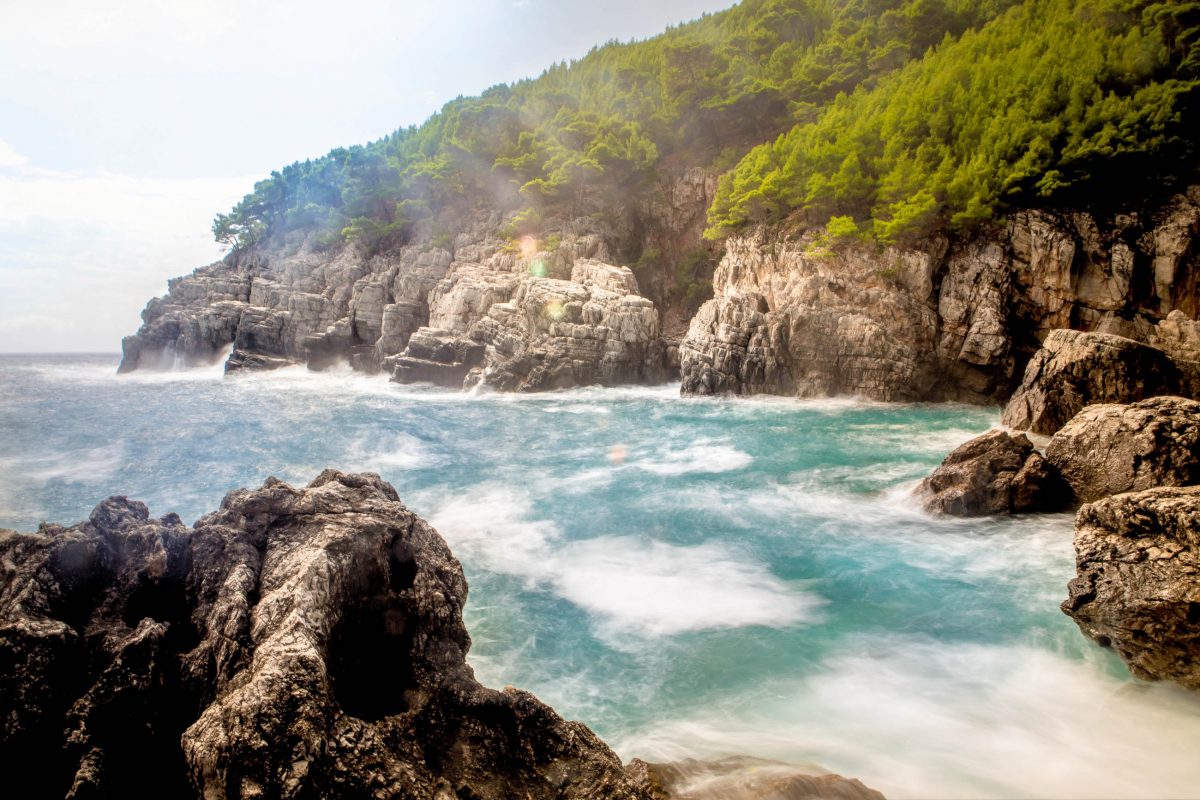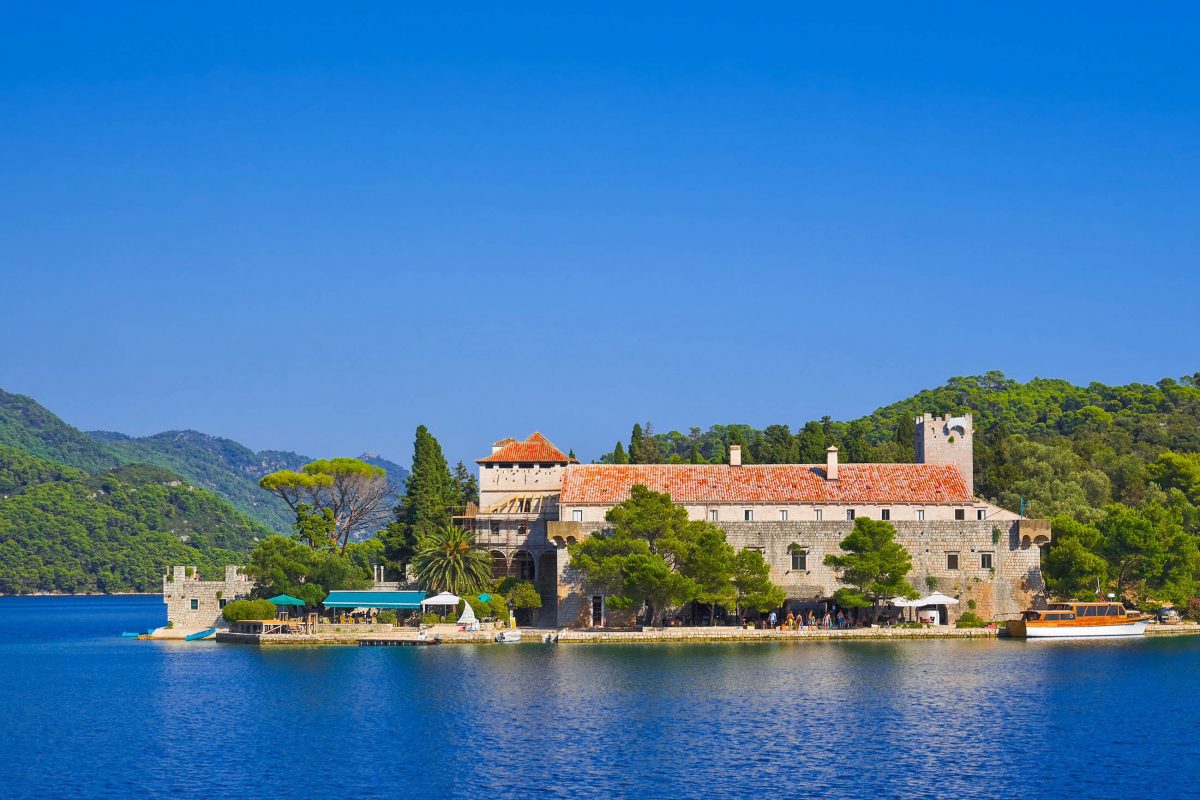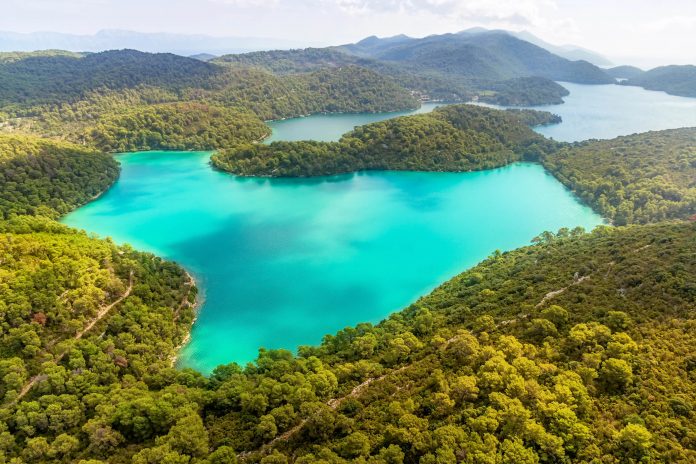Die dichten Wälder im Nationalpark Mljet auf der gleichnamigen Insel vor der Südküste Kroatiens verbergen so manche landschaftliche und historische Sehenswürdigkeit.
Das westliche Drittel der malerischen Insel Mljet vor der südlichen Küste von Kroatien wird vom landschaftlich äußerst reizvollen Nationalpark Mljet eingenommen. Die Insel Mljet wurde bereits vor den Zeiten der Römer von den Illyrern bewohnt und wird oft auch als „Odysseus-Insel“ bezeichnet.
Gemeinsam mit der griechischen Insel Kefalonia und Malta steht Mljet im Verdacht, die biblische Insel Melite zu sein, auf der der Apostel Paulus laut der Apostelgeschichte Schiffbruch erlitt. Im achten Jahrhundert siedelten die ersten Kroaten vom Neretva-Delta am Festland auf die Insel.
Inhaltsverzeichnis
BILDER: Nationalpark Mljet
Fotogalerie: Nationalpark Mljet
Wie kommt man am besten auf die Insel Mljet?
Auf die Insel Mljet könnt ihr auch mit dem Auto anreisen. Von der Halbinsel Pelješac starten Fähren in die herrlichen Wälder des Eilands, die am kleinen Hafen von Pomena an der Westspitze der Insel anlegen. Dubrovnik oder Split und die Inseln Korcula oder Hvar sind ebenfalls gute Ausgangspunkte, um auf die Insel Mljet zu gelangen.
Tipp: Die Besichtigung der UNESCO-Weltkulturerbe-Stadt Dubrovnik und ein Tagesausflug in die stillen Wälder von Mljet bieten sich als ideale Urlaubs-Kombination von Kultur und Natur an.
Flora und Fauna des Nationalparks Mljet

Sanddünen und Steilklippen an den Küsten schaffen gemeinsam mit den Wäldern ein vielfältiges Ökosystem. Auch Teile der Adria gehören zum Nationalpark Mljet. Darin wurden bereits Mittelmeer-Mönchsrobben entdeckt, die zu den am stärksten gefährdeten Säugetierarten der Welt zählen.
Der rund 30 Quadratkilometer große Nationalpark Mljet wurde am 11. November 1960 zum Schutz der Flora und Fauna der Insel gegründet. Mit über 70% Waldfläche ist Mljet eine der am stärksten bewaldeten Inseln im gesamten Mittelmeerraum, auf der sogar noch ein Stück unberührter Mittelmeer-Urwald gedeiht. Ansonsten bilden Steineichen und Kiefern den Großteil der Vegetation.
Im dichten Unterholz, welches übrigens vor dem Waldbrand im Jahr 1917 noch dichter war, leben immer noch Mungos. Diese exotische Säugetierart wurde 1909 auf der Insel ausgesetzt, um Giftschlangen zu vernichten (was übrigens auch gelungen ist). Die verbliebene Population sorgt gemeinsam mit Schlangenadlern dafür, dass dies auch so bleibt. Auch die Hirsche, Wildschweine und Hasen, die den Nationalpark bevölkern, wurden vom Menschen auf der Insel Mljet angesiedelt.
Sehenswürdigkeiten im Nationalpark Mljet

Die Sehenswürdigkeiten des Nationalparks Mljet werden am besten zu Fuß auf dem weit verzweigten Netz aus Wanderwegen erkundet. Ziel mit unvergesslichem Panoramablick verspricht eine Wanderung auf den Montokuc, von dem aus sich die gesamte Insel, der Pelješac-Kanal und die Adria überblicken lässt.
Baden, Schwimmen und Schnorcheln im Nationalpark Mljet bieten sowohl an der felsigen Küste als auch an den Ufern der beiden Seen ein unvergessliches Urlaubserlebnis. Die schönsten Strände auf Mljet befinden sich bei Pomena, Polače und Suplenara.
Odysseus-Höhle
Auch Höhlen und Grotten gibt es in den unberührten Felsen zu entdecken, unter anderem die bekannte Odysseus-Höhle. In dieser 20m hohen Grotte hatte die wunderschöne Calypso der Legende nach den griechischen Helden und seine Mannschaft jahrelang zum Bleiben verführt.
Der Weg zur Höhle startet in Babino Polje und führt rund 2km nach Süden. Sie liegt versteckt in einer Bucht und kann entweder zu Fuß oder schwimmend erreicht werden. Fragen Sie Einheimische nach der „Odysejeva Spilja“!
Veliko und Malo Jezero (Großer und kleiner See)
Mit 24 und 145 Hektar zählen die beiden Seen zu den landschaftlichen Highlights des Nationalparks Mljet. Die Landstraße, die Pomena über Polače mit dem Rest der Insel verbindet, bietet herrliche Ausblicke auf die beiden Wasserflächen, die über einen engen Abfluss mit der Adria verbunden sind. Besonders prächtig ist der Anblick bei Sonnenuntergang, wenn die Sonne hinter den Seen langsam im Meer versinkt.
Benediktinerkloster

Auf der Marieninsel im Veliko Jezero ist mit dem Benediktinerkloster die bedeutendste architektonische Sehenswürdigkeit der Insel Mljet zu finden. Das romanische Kloster wurde im Jahr 1151 vom Fürsten von Zahumlje gestiftet und bis etwa 1800 von Benediktinermönchen geführt.
In diesem Zeitraum entwickelte es sich – auch dank Frondienst und Steuern der Inselbewohner – zum kulturellen, religiösen und politischen Zentrum von Mljet. In den 1960er-Jahren war es kurzfristig ein Hotel, ist heute jedoch wieder geschlossen.
Polače
Auch Polače ist einen Besuch wert. Die kleine Ortschaft entstand aus einem alten römischen Palast, der einst stark befestigt war. Sehenswert ist auch die christliche Basilika des Ortes.
Weiterführende Links:




